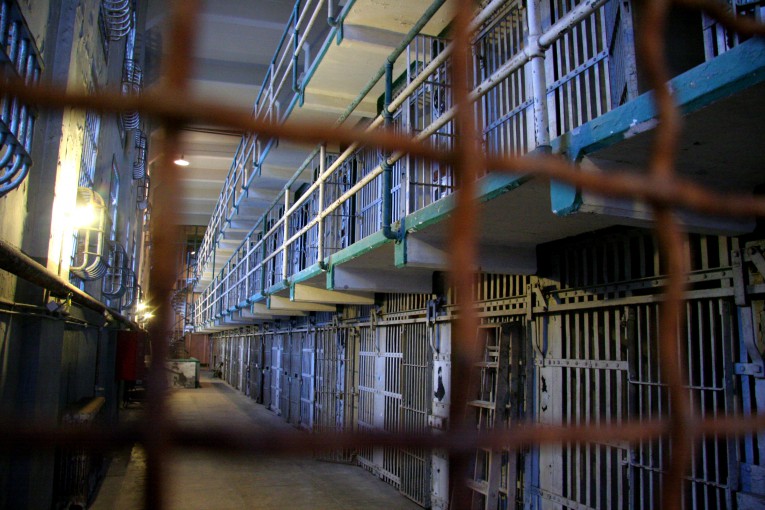

By Avalon Amaral and Mia Machado
After a decade of insufficient and incohesive decarceration efforts, the current coronavirus pandemic and its ongoing public health crisis underscore the need for meaningful reform for overcrowded prison populations, according to Nazgol Ghandnoosh from The Sentencing Project.
And Ghandnoosh proposes a solution – reducing excessive prison terms for violent convictions.
The United States has the highest incarceration rate compared to any other country worldwide. According to the most recent data from the Bureau of Justice Statistics, as of 2019, 1.4 million people were incarcerated in U.S. prisons.
As Ghandnoosh points out, these shocking mass incarceration levels are contributed to by a rise of prisoners serving life sentences and by those detained as a part of the War on Drugs.
Despite observing a notable 11 percent decline in the U.S. prison population following all-time highs seen in 2009, it makes up very little for  the 700 percent increase reached from 1972- 2009.
the 700 percent increase reached from 1972- 2009.
If the U.S. continue down this path, Ghandoosh suggests that “it will take nearly six decades to cut the U.S. prison population in half.”
While several states and the federal system have made additional reductions in their prison populations following the start of the coronavirus pandemic, efforts to reduce “unnecessarily high levels of imprisonment amidst a public health crisis” remain “limited” and underscore the need for meaningful reform now, and going forward,” he said.
It is to be noted, Ghandnoosh adds, that nine states – Alaska, New Jersey, New York, Connecticut, Alabama, Rhode Island, Vermont, Hawaii, and California – “have made significant progress in curbing mass incarceration.”
Through “a mix of changes in policy and practice designed to reduce prison admissions and lengths of stay,” these states have successfully reduced prison populations by 30 percent or more “since reaching their peak imprisonment levels,” he adds, noting that “However, significant variation in incarceration rates persists across states with many resorting to short-term solutions for problems of “dangerous overcrowding.”
While facing lawsuits by the federal government for “serious Constitutional violations,” Alabama plans to curb overcrowding by constructing additional prisons rather than reducing its “still-bloated prison system,” Ghandnoosh said, while states such as Montana, Idaho, Nebraska, and Kansas faced their highest ever prison populations in 2019.
Ghandnoosh notes that despite 46 states and the federal government successfully reducing their prison populations from their peak incarceration levels, varying degrees of progress among states and slow-paced reforms are still insufficient to combat “nearly four decades of aggressive annual imprisonment growth.”
Even as the United States observes a “dramatic decline in crime rates”-plummeting to half of its 1990s levels in 2019- “only modest progress to end mass incarceration” persists, with decarceration rates “averaging 1.2 percent annually…”at this rate it will take 57 years — until 2078 — to cut the U.S. prison population in half,” he maintains.
Meaningful and expedited decarceration – Ghandnoosh explains – will require reforms targeted at “accelerating the end of the Drug War and scaling back sentences for all crimes, including violent offenses for which half of people in prison are serving time.”
Past reforms aimed at decreasing the number of people imprisoned for drug offenses have proved effective, with an observed 31 percent reduction between 2007 and 2018.
However, he notes that for the population imprisoned for violent crimes – ranging from certain burglaries, robbery, assault, rape, and murder – “reforms remain elusive.” The number of individuals imprisoned for these types of offenses has only declined by five percent between 2009 and 2018, “despite substantial declines in violence since the mid-1990s.”
A “key driver of mass incarceration,” Ghandnoosh argues, has been the dramatic growth in prison terms for these types of offenses, such that “the population serving life sentences in 2016 exceeded the total prison population in 1970.”
These longer prison terms have “prevented this segment of the prison population from contracting alongside a historic crime drop.” However, the “reluctance to scale back extreme sentences,” Ghandnoosh explains, “is at odds with evidence.”
Ghandnoosh, in summary, suggests that not only do long sentences “incapacitate older people who pose little public safety threat,” but they provide limited deterrent effects and detract from “more effective investments in public safety.”
And, mass incarceration is expected to last for the next 60 years…to expedite this six-decade-long problem it will require a reassessment of prison terms for all crimes, as well as minimizing incarceration, and prison terms for non-violent criminals, Ghandnoosh added.
 Mia Machado is a junior at UC Davis, currently majoring in political science-public service and minoring in Luso-brazilian studies. She is originally from Berkeley, California
Mia Machado is a junior at UC Davis, currently majoring in political science-public service and minoring in Luso-brazilian studies. She is originally from Berkeley, California
Avalon Amaral originaly from Livermore CA, is a junior at UC Davis. She is pursuing a degree in Sociology Emphisizing in Law and Society, and minoring in Psychology.
To sign up for our new newsletter – Everyday Injustice – https://tinyurl.com/yyultcf9
Support our work – to become a sustaining at $5 – $10- $25 per month hit the link:
